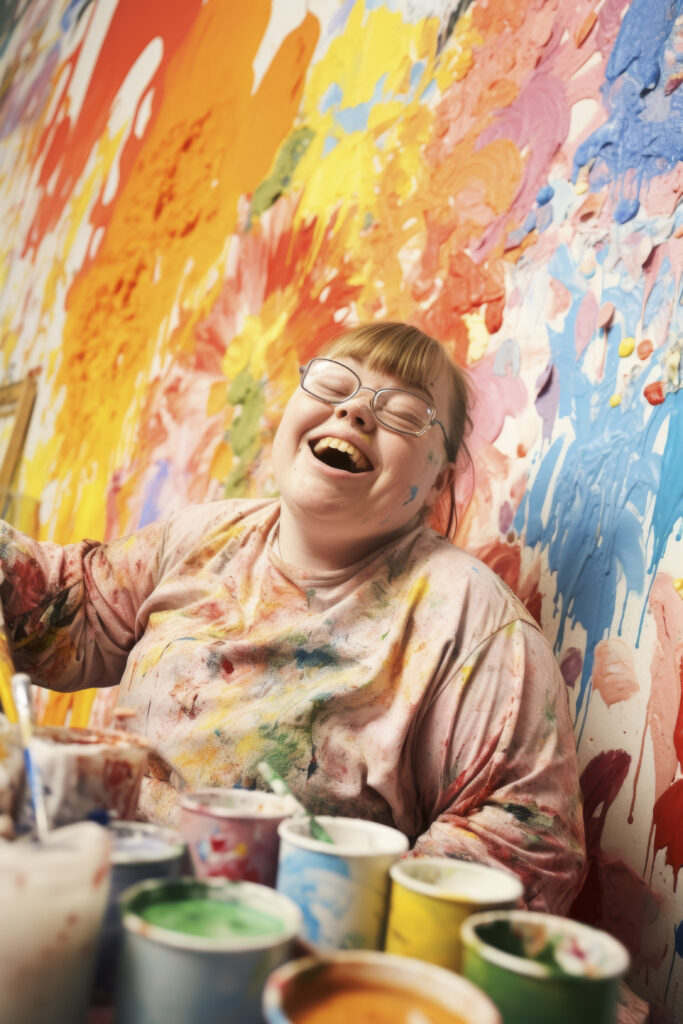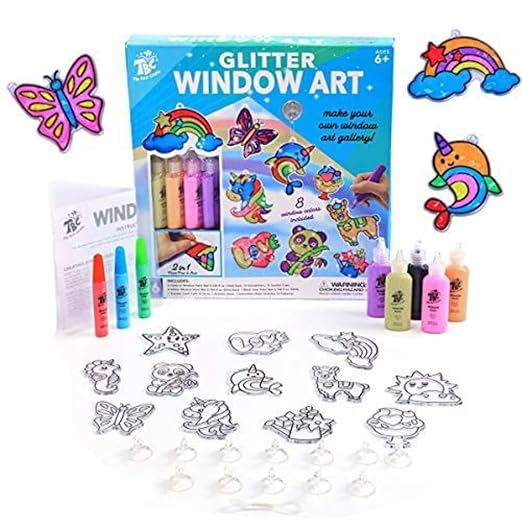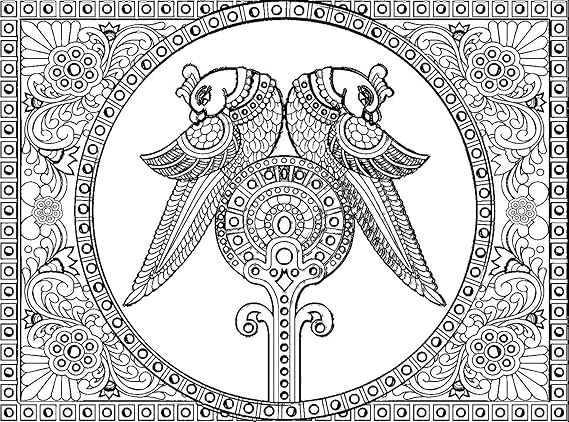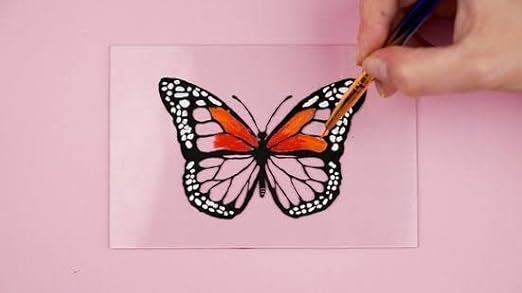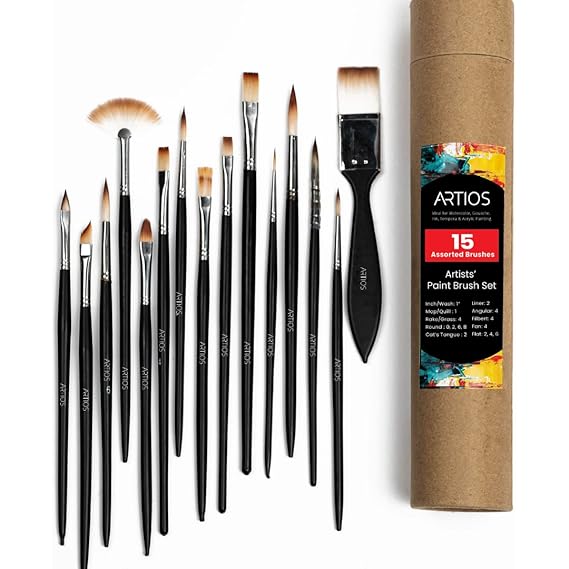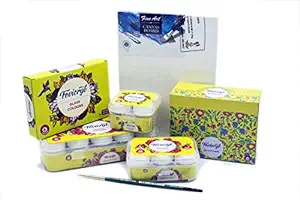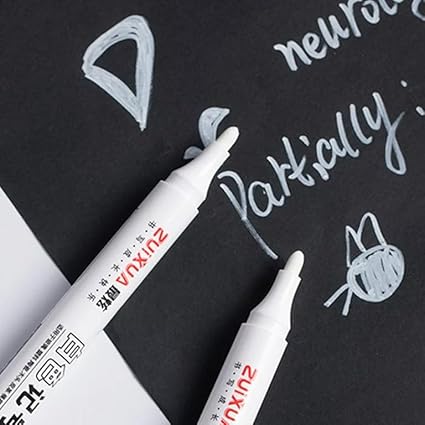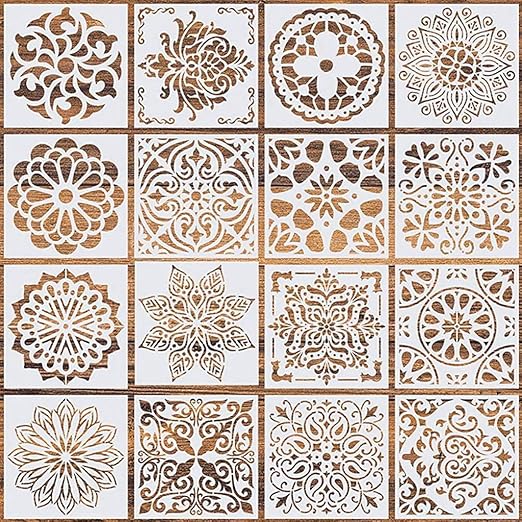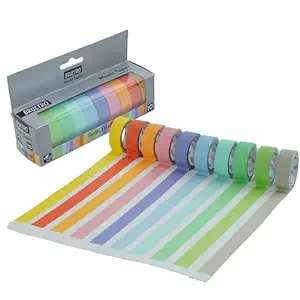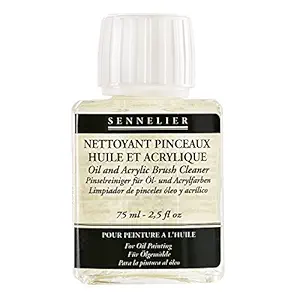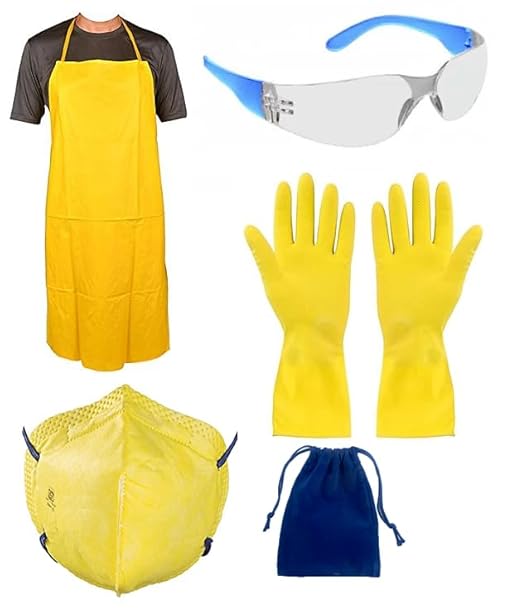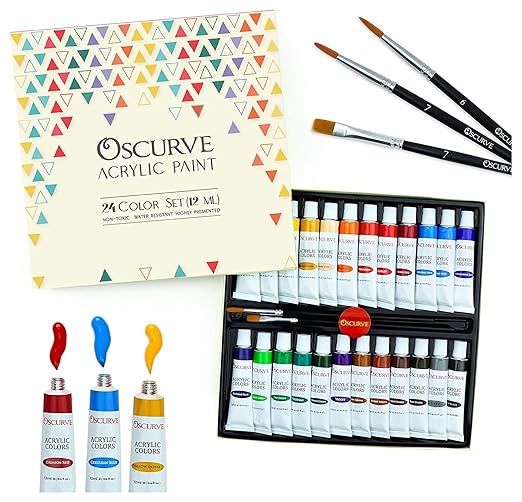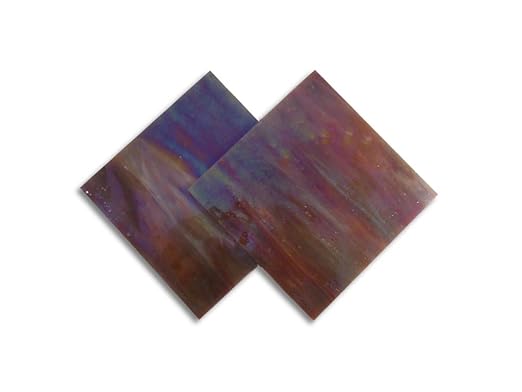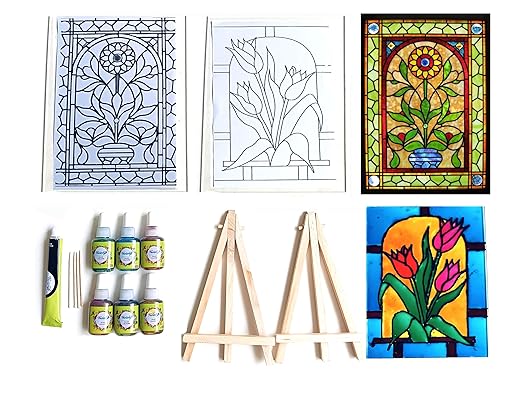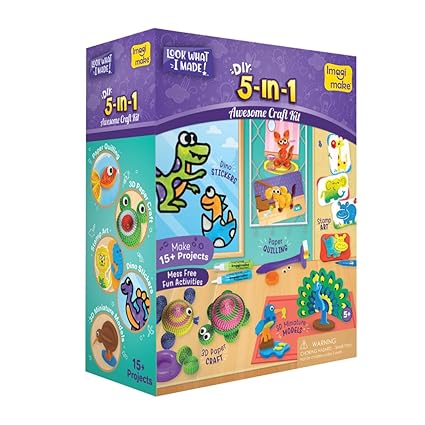“Step into the captivating world of glass painting, where imagination meets luminous beauty. Whether you’re seeking to add a touch of color to your living space or unleash your artistic flair, glass painting offers endless possibilities. From intricate stained glass designs to whimsical sun catchers, explore the magic of transforming ordinary glass surfaces into vibrant works of art. Are you ready to let your creativity shine through the shimmering hues of glass painting?”
Table of Contents
Glass painting is a captivating art form that infuses luminosity, color, and imagination onto transparent surfaces, creating mesmerizing works of visual delight. It involves the meticulous application of specialized paints onto glass, whether it be flat panes, curved vessels, or ornate windows, transforming them into vibrant canvases for artistic expression.
At its core, glass painting combines the interplay of light and pigment, resulting in pieces that shimmer and glow as natural light passes through them. Artists wield brushes with precision, carefully layering colors to achieve depth, texture, and dimensionality. From intricate details to sweeping strokes, each brushstroke contributes to the narrative woven into the artwork, evoking emotions and stirring the imagination of viewers.
One of the remarkable aspects of glass painting is its versatility. Whether depicting intricate floral motifs, abstract designs, landscapes, or storytelling scenes, the possibilities are endless. Artists may choose to enhance their creations further by incorporating techniques such as shading, blending, and etching, adding another layer of complexity and sophistication to their work.
Beyond its aesthetic appeal, glass painting holds cultural significance across various traditions and historical periods. From the vibrant stained glass windows of medieval cathedrals to the delicate motifs adorning traditional Chinese vases, the art form has evolved and adapted, reflecting the diverse aesthetics and sensibilities of different cultures.
Contemporary glass painters keep on pushing the limits of the medium, exploring different avenues regarding imaginative methods, materials, and styles. Whether creating decorative pieces, functional objects, or gallery-worthy installations, glass painting remains a timeless and enchanting art form that celebrates creativity, skill, and the beauty of light and color.
Also Read: Birthday Decoration
Let's delve into a concise exploration of its historical evolution:
Glass painting has a rich history dating back centuries, with evidence of its practice found in various cultures around the world.
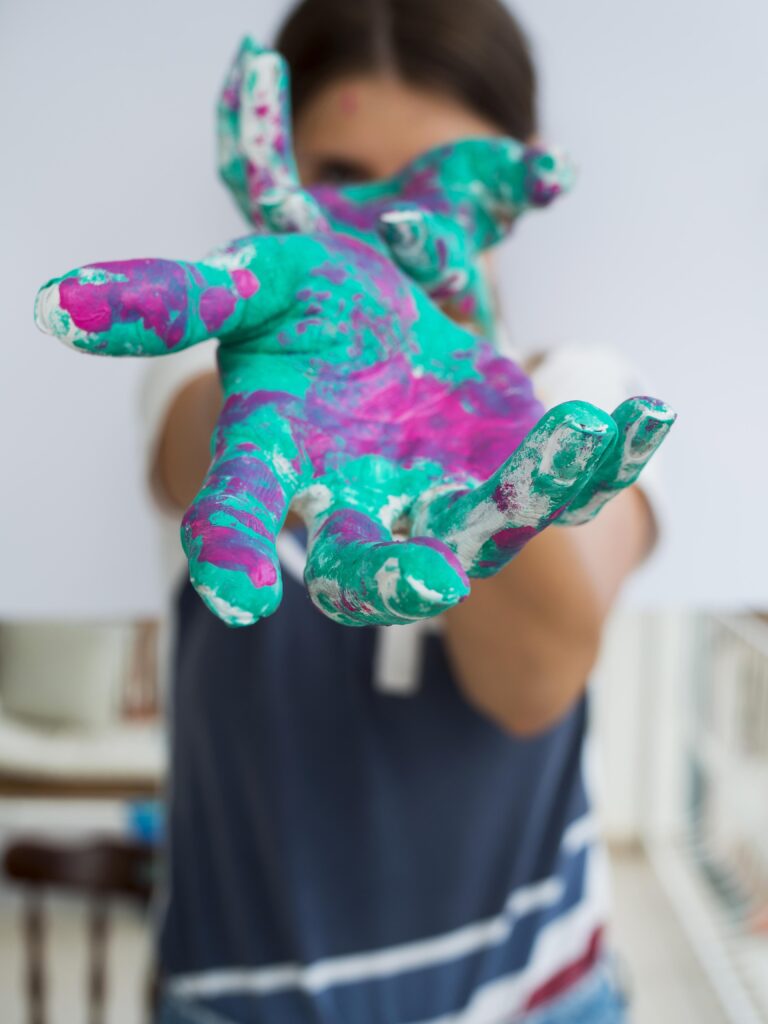
1. Ancient Origins:
The roots of glass painting can be traced back to ancient civilizations such as Egypt, Rome, and China. Archaeological findings suggest that early glassmakers experimented with coloring glass by adding metallic oxides or using different techniques to create patterns and designs on glass objects.
2. Middle Age Europe:
Glass painting became particularly prominent during the medieval period in Europe, especially with the rise of stained glass windows in churches and cathedrals. These windows served not only a functional purpose of allowing light into the buildings but also as a means of conveying religious narratives and stories to illiterate congregations. Skilled artisans would use various techniques, including vitreous enamel, silver staining, and colored glass pieces, to create intricate designs and scenes on large glass panels.
3. Renaissance and Baroque Periods:
During the Renaissance and Baroque eras, glass painting continued to flourish as artists explored new techniques and styles. The demand for decorative glass items such as goblets, vases, and mirrors increased among the nobility and wealthy patrons, leading to the production of finely detailed painted glass pieces.
4. 19th Century Revival:
The 19th century saw a revival of interest in medieval art and craftsmanship, sparking renewed interest in stained glass and glass painting. Artists and craftsmen sought to emulate the techniques of the past while also incorporating innovations of their time.
5. Modern Era:
In the 20th and 21st centuries, glass painting has evolved into a diverse art form, with artists exploring a wide range of styles, techniques, and subjects. While traditional methods such as stained glass window creation are still practiced, contemporary artists also use glass painting in more experimental ways, incorporating it into mixed media artworks, decorative objects, and even architectural installations.
Throughout its history, glass painting has been a versatile art form, employed for both decorative and functional purposes. Its evolution reflects the changing tastes, technological advancements, and cultural influences of different time periods, yet its enduring appeal lies in its ability to captivate with its luminous beauty and intricate craftsmanship.
Also Read: Best Outdoor Games
Crafting with Light: Exploring Diverse Glass Paintings Approaches Crafting with Light
Glass painting encompasses various techniques and styles, each offering unique ways to create stunning artworks.
Here are some of the most common types of glass painting:
1. Stained Glass Painting:
This traditional technique involves painting directly onto glass surfaces using specialized glass paints or stains. Artists often use a combination of transparent and opaque paints to achieve intricate designs. Stained glass painting is commonly used for creating decorative windows, panels, and lampshades.
2. Reverse Glass Painting:
In this method, the artist paints the reverse side of a glass surface, applying the colors and details in reverse order. This technique requires careful planning and precision since the final image will be viewed through the glass. Reverse glass painting is often used for creating decorative artworks, ornaments, and signs.
3. Glass Enameling:
Enameling involves fusing powdered glass onto a glass surface through high heat, typically in a kiln. Artists can apply enamels in various ways, including brushing, stenciling, or sifting. Once fired, the enamel forms a durable, glossy coating on the glass, creating vibrant and long-lasting designs. Glass enameling is used for creating jewelry, decorative objects, and intricate artworks.
4. Acid Etching:
Acid etching is a technique where artists use acid to selectively remove the top layer of glass, creating frosted or textured areas. By applying a resist material such as wax or vinyl, artists can control the areas to be etched, allowing for intricate designs and patterns. Acid etching is often used for creating decorative glassware, mirrors, and architectural elements.
5. Glass Fusing and Slumping:
While not strictly painting, glass fusing and slumping techniques involve melting and shaping glass pieces in a kiln to create three-dimensional artworks. Artists can incorporate painted or colored glass elements into their fused or slumped creations, adding depth and dimension to their designs. This method is used for creating sculptures, bowls, jewelry, and other decorative objects.
6. Glass Mosaic:
Mosaic involves assembling small pieces of colored glass (called tesserae) to create a larger image or pattern. While not painting in the traditional sense, artists can incorporate painted or stained glass pieces into their mosaic compositions to add color and detail. Glass mosaic artworks can range from small decorative pieces to large-scale installations, both indoors and outdoors.
These are just a few examples of the diverse techniques within the realm of glass painting. Each method offers artists endless possibilities for creating beautiful and expressive artworks on glass surfaces.
Also Read: Best Indoor Games
Vivid Visions: Unleashing Creativity through Glass Painting
Glass painting finds a myriad of uses across artistic, decorative, and functional domains, adding a touch of elegance, vibrancy, and personalization to various settings.
Here are some common uses of glass painting:
1. Decorative Art:
Glass painting serves as captivating décor pieces, adorning walls, windows, and tabletops in homes, offices, and public spaces. They add color, style, and visual interest to any environment, whether it be a cozy living room or a grand architectural space.

2. Stained Glass Windows:
One of the most iconic applications of glass painting is in the creation of stained glass windows for churches, mosques, temples, and other religious or historic buildings. These windows not only beautify architectural spaces but also tell stories, convey symbolism, and evoke spiritual or cultural significance.
3. Home Décor:
Glass painting is used to embellish mirrors, glass doors, vases, and other household items, transforming them into personalized and eye-catching accents that reflect the homeowner’s taste and style.
4. Gifts and Keepsakes:
Hand-painted glassware such as wine glasses, mugs, plates, and ornaments make thoughtful and unique gifts for special occasions like weddings, birthdays, and anniversaries. Customized glass paintings can be created to commemorate cherished memories or celebrate personal milestones.
5. Functional Art:
Glass painting extends beyond purely decorative purposes to include functional items such as lampshades, candle holders, and jewelry boxes. These pieces not only serve practical functions but also elevate everyday objects into works of art.
6. Art Installations:
Glass painting is often featured in art galleries, museums, and exhibitions as standalone pieces or part of larger installations. Artists push the boundaries of the medium, experimenting with scale, materials, and concepts to create immersive and thought-provoking experiences for viewers.
7. Commercial Signage:
Businesses and storefronts utilize glass painting for signage, branding, and advertising purposes. Whether it’s hand-painted logos, murals, or promotional displays, glass paintings help businesses stand out and attract customers with their visual appeal.
8. Restoration and Conservation:
Glass painting is meticulously restored and conserved to preserve their historical, cultural, and artistic significance. Conservationists employ specialized techniques to repair damaged glasswork, ensuring that it remains intact for future generations to appreciate.
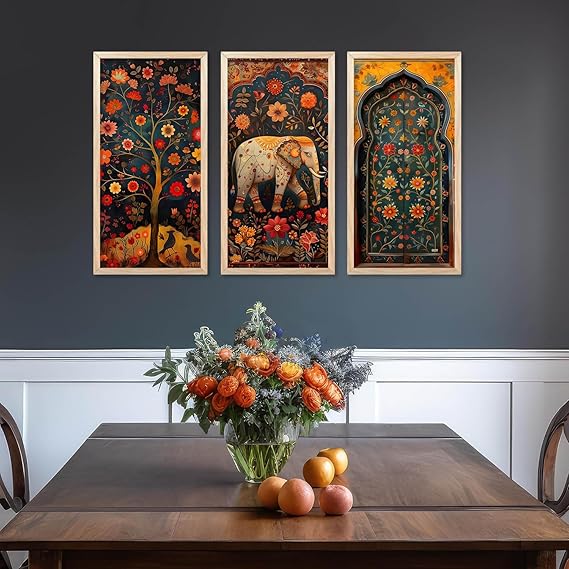
Overall, the versatility and beauty of glass painting make it a beloved and enduring art form that enhances aesthetics, commemorates moments, and sparks creativity in various spheres of life.
Also Read: Best Mindset Books
Brushes & Light: Tools and Techniques of Glass Painting
Tools used for glass painting include:
1. Paintbrushes:
Fine-tipped brushes are essential for applying detailed designs and intricate lines onto glass surfaces. Brushes with synthetic or natural bristles can be used depending on the desired effect and type of paint being applied.
2. Glass Paints:
Specialized glass paints are formulated to adhere to glass surfaces and withstand heat treatments like firing or baking. These paints come in various forms, including transparent, opaque, and enamel paints, offering artists a range of options for creating different effects.
3. Glass Markers:
Glass markers are pens or markers filled with transparent or opaque ink specially designed for use on glass surfaces. They provide a convenient way to draw or outline designs directly onto glass without the need for brushes or paint palettes.cts.
4. Palette and Mixing Dish:
Artists use palettes and mixing dishes to blend and dilute glass paints to achieve the desired colors and consistencies. Glass or ceramic palettes are ideal for mixing paints, as they are easy to clean and won’t absorb the paint.
5. Stencils:
Stencils are pre-cut templates or designs used to create consistent shapes or patterns on glass surfaces. Artists can use stencils with spray paints, brushes, or markers to add intricate details to their glass paintings.
6. Masking Tape:
Masking tape is used to create clean edges and borders on glass surfaces by masking off areas that are not meant to be painted. It helps prevent paint from bleeding or spreading beyond the desired boundaries, ensuring crisp and precise designs.
7. Solvent or Thinner:
Solvents or thinners are used to clean brushes, palettes, and other painting tools, as well as to dilute paints for certain techniques. It’s essential to use the appropriate solvent recommended for the specific type of glass paint being used.
8. Protective Gear:
Since some glass paints may contain toxic substances or emit fumes during application, artists should wear protective gear such as gloves, masks, and goggles to ensure safety while painting.
These tools, when used skillfully, enable artists to create stunning works of art on glass surfaces, whether it’s intricate stained glass windows, delicate glass ornaments, or vibrant decorative panels.
Sparkling Creations: Glass Paintings Fun for Kids!
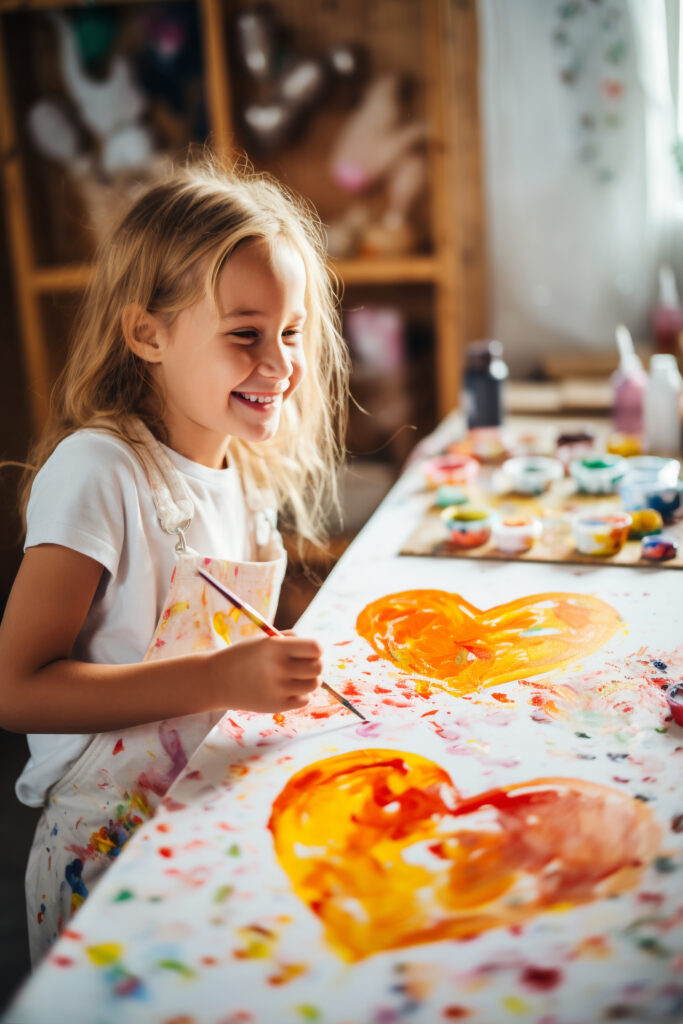
Let’s Dive into a world of vibrant creativity with exciting range of kits for kids’ glass painting! From colorful paint sets to dazzling DIY projects, these kits are specially designed to ignite imagination and bring out the budding artist in every child. Let their creativity shine as they transform plain glass surfaces into dazzling works of art. With easy-to-use paints, pre-cut shapes, and endless possibilities, our glass painting kits promise hours of fun and artistic expression for children of all ages. Spark their creativity and watch their masterpieces come to life with our delightful collection!
Also Read: Best School Bag for Children
1. Glass Paint Sets:
Child-friendly glass paint sets containing non-toxic, washable paints in vibrant colors. These sets often come with a variety of brushes and stencils to inspire creativity.
2. DIY Glass Ornaments Kit:
Kits that include pre-cut glass shapes such as ornaments or sun catchers along with paints and accessories for decorating. These kits are great for creating personalized gifts or decorations for special occasions.
3. Stained Glass Art Kits:
Kits that allow kids to create their own faux stained glass art using translucent paints and peel-and-stick leading strips. This provides a mess-free way for kids to explore the beauty of stained glass without the need for glass cutting or soldering.
4. Paint Your Own Glassware Set:
Sets containing plain glassware such as cups, mugs, or vases along with glass paints and instructions for decorating. Kids can unleash their imagination by painting designs on these functional items, making them unique and personalized.
5. Window Art Kits:
Kits that include transparent window clings or sheets along with glass paints for creating temporary window decorations. Kids can design and paint scenes or patterns to adorn windows, mirrors, or glass doors, adding a touch of color and whimsy to any space.
6. Craft Kits with Glass Surfaces:
Craft kits that incorporate glass surfaces such as picture frames, jewelry boxes, or coasters along with paints and embellishments for decorating. These kits offer a versatile canvas for kids to express their creativity while also creating practical and decorative items.
7. Sun Catcher Kits:
Kits containing plastic or glass sun catcher shapes along with paints and suction cups for hanging. Kids can paint colorful designs on these sun catchers and display them in windows to capture and refract sunlight, creating beautiful patterns indoors.
These products provide kids with everything they need to explore the exciting world of glass painting in a safe and enjoyable way, fostering creativity and artistic expression.
Also Read: Study Table for Kids
Here are some frequently asked questions (FAQs) about glass painting:
1. What is glass painting?
Glass painting is a decorative art form where colors and designs are applied to glass surfaces using specialized paints, markers, or enamels. It can involve various techniques such as stained glass painting, reverse glass painting, and glass enameling.
2. What types of glass are suitable for painting?
Most types of clear or translucent glass can be used for painting, including glass sheets, windows, bottles, jars, and glassware such as vases or ornaments. It’s important to ensure that the glass surface is clean and free from any oils or residues before painting.
3. What materials do I need for glass painting?
Basic materials for glass painting include glass paints or enamels, paintbrushes, palette or mixing dishes, masking tape, stencils (optional), and a surface to paint on. Depending on the technique and project, you may also need additional tools such as glass markers, solvents, or protective gear. painting.
4. How do I prepare glass surfaces for painting?
To prepare glass surfaces for painting, clean them thoroughly with a mild detergent to remove any dirt, grease, or fingerprints. Rinse the glass with water and dry it completely before painting. If needed, you can also use rubbing alcohol or glass cleaner to ensure a clean surface.
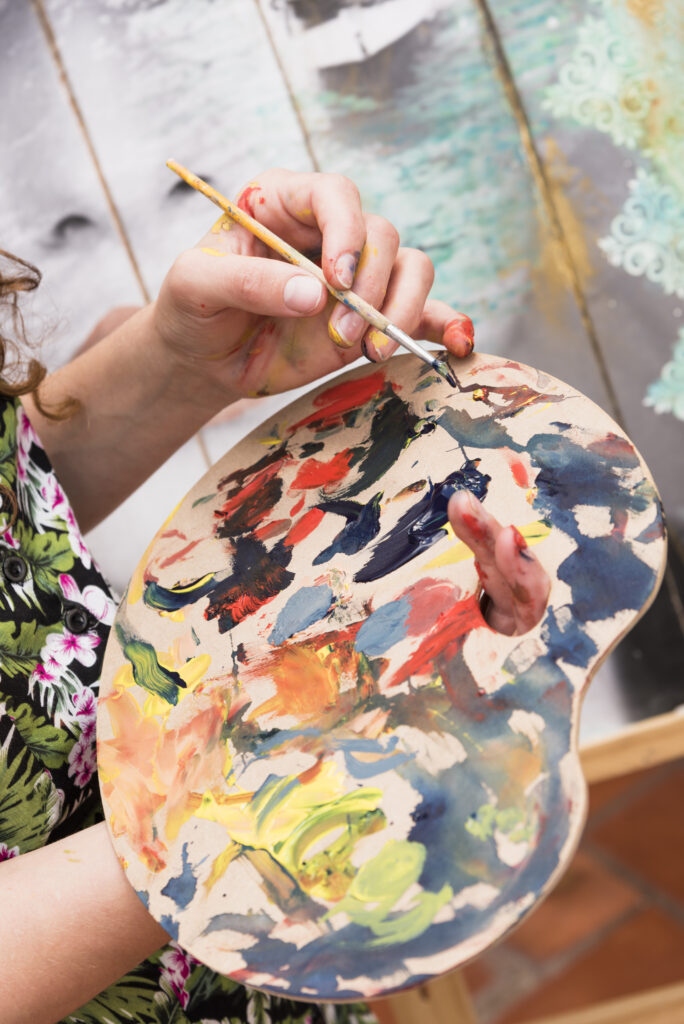
5. Will glass-painted things be washed or presented to water?
It depends on the type of glass paint used. Some glass paints are water-based and may be water-resistant once cured, allowing painted items to be gently hand-washed. However, others may require additional sealing or curing methods to make them more durable and water-resistant.an surface.
6. Is glass painting suitable for children?
Yes, glass painting can be a fun and creative activity for children, but adult supervision is recommended, especially when using paints or tools that may pose safety hazards. It’s important to use non-toxic and child-safe materials and to follow safety guidelines to prevent accidents.
7. Where can I find inspiration and ideas for glass painting projects?
Inspiration for glass painting projects can be found in various sources such as art books, online tutorials, craft magazines, and websites dedicated to glass art. You can also draw inspiration from nature, geometric patterns, cultural motifs, or personal interests to create unique and personalized designs materials and to follow safety guidelines to prevent accidents.
Also Read: Drawing for Kids
